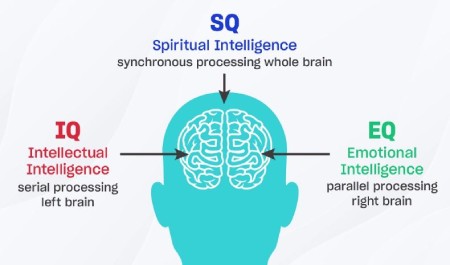A happy cry, also called tears of joy or tears of joy, is a type of crying caused by positive emotions such as joy, satisfaction, love, or excitement. This type of crying can occur in response to a wide range of happy events such as the birth of a baby, marriage, graduation, or winning a sporting event.
Why does happy crying happen?
The exact cause of happy crying is still not fully understood, but researchers have come up with several theories.
One theory is that happy crying is a way to vent intense positive emotions. When people experience strong emotions such as joy, excitement, or love, tears may occur as a way to process and express these emotions.
Another theory is that happy crying is a way to communicate with others. When people cry from happiness, they show others that they are experiencing the emotion intensely. It can help strengthen relationships and create emotional bonds.
A third theory is that happy crying is a way to regulate mood. Crying can help reduce stress, anxiety, and other negative emotions. In this way, happy crying can help create feelings of peace and contentment.
Consequences of happy crying
Crying for joy usually has no negative consequences. In fact, this type of crying can have several health benefits, including:
– Reducing stress and anxiety
– Mood improvement
– Strengthening social relations
– Improving physical health
Happy crying in different cultures
Crying of happiness has been observed in different cultures of the world. In some cultures, happy crying is considered a sign of a person’s strength of character and mental health. In other cultures, happy crying is considered a sign of weakness or vulnerability.
In Western culture, happy crying is usually associated with positive emotions such as joy, excitement, and love. This type of crying often occurs in response to major life events such as the birth of a baby, marriage, or graduation.
In Eastern culture, happy crying is often associated with positive feelings such as contentment, relaxation, and peace. This type of crying often occurs in response to religious or mystical events.

Benefits of happy crying
Happy crying can have various benefits for physical and mental health. Some of these benefits include:
Reduce stress and anxiety
Crying can help reduce stress hormones such as cortisol. This can help reduce feelings of anxiety and stress.
Mood improvement
Crying can help increase the production of happy hormones such as serotonin. It can help improve your mood and sense of satisfaction.
Strengthening social relationships
Crying can help show positive emotions to others. It can help strengthen social relationships and create emotional bonds.
Improve physical health
Crying can help reduce inflammation and improve immune function. This can help improve overall physical health.
How to manage your happy cry?
If you want to manage your happy crying, there are a few things you can do:
Allow your emotions to flow
Do not try to suppress your feelings. Let the tears flow and process your emotions.
Cry in a safe and private place
If you feel uncomfortable crying in front of others, cry in a safe and private place.
Talk to someone you trust
If you want to share your feelings with someone, talk to someone you trust.
A few more tips for managing happy crying:
If you feel like you can’t control your emotions, talk to a mental health professional.
If your happy crying occurs frequently and is interfering with your life, talk to a mental health professional.
– Crying of happiness is a natural and healthy reaction that can have various benefits for physical and mental health. If you cry from happiness, don’t worry. This is a sign of your mental health.
What are the frequently asked questions about happy crying? Why does this happen?
1. What is a happy cry?
A happy cry, also called tears of joy or tears of joy, is a type of crying caused by positive emotions such as joy, satisfaction, love, or excitement. This type of crying can occur in response to a wide range of happy events such as the birth of a baby, marriage, graduation, or winning a sporting event.
2. Why does happy crying happen?
– The first theory is that happy crying is a way to vent strong positive emotions.
– Another theory is that happy crying is a way to communicate with others.
– The third theory is that happy crying is a way to regulate mood.
3. Does happy crying have negative consequences?
Crying for joy usually has no negative consequences. In fact, this type of crying can have various health benefits.
4. How is happy crying seen in different cultures?
In some cultures, happy crying is considered a sign of a person’s strength of character and mental health. In other cultures, happy crying is considered a sign of weakness or vulnerability. In Western culture, happy crying is usually associated with positive emotions such as joy, excitement, and love. In Eastern culture, happy crying is often associated with positive feelings such as contentment, relaxation, and peace.
5. What are the benefits of happy crying?
Reduce stress and anxiety
Mood improvement
Strengthening social relationships
Improve physical health
6. How to manage our happy crying?
– Allow your emotions to flow
– Cry in a safe and private place
– Talk to someone you trust
Summary:
Crying for joy is a normal and healthy occurrence that can occur in response to a wide range of happy events. This type of crying can have various health benefits and help people process and express positive emotions.









